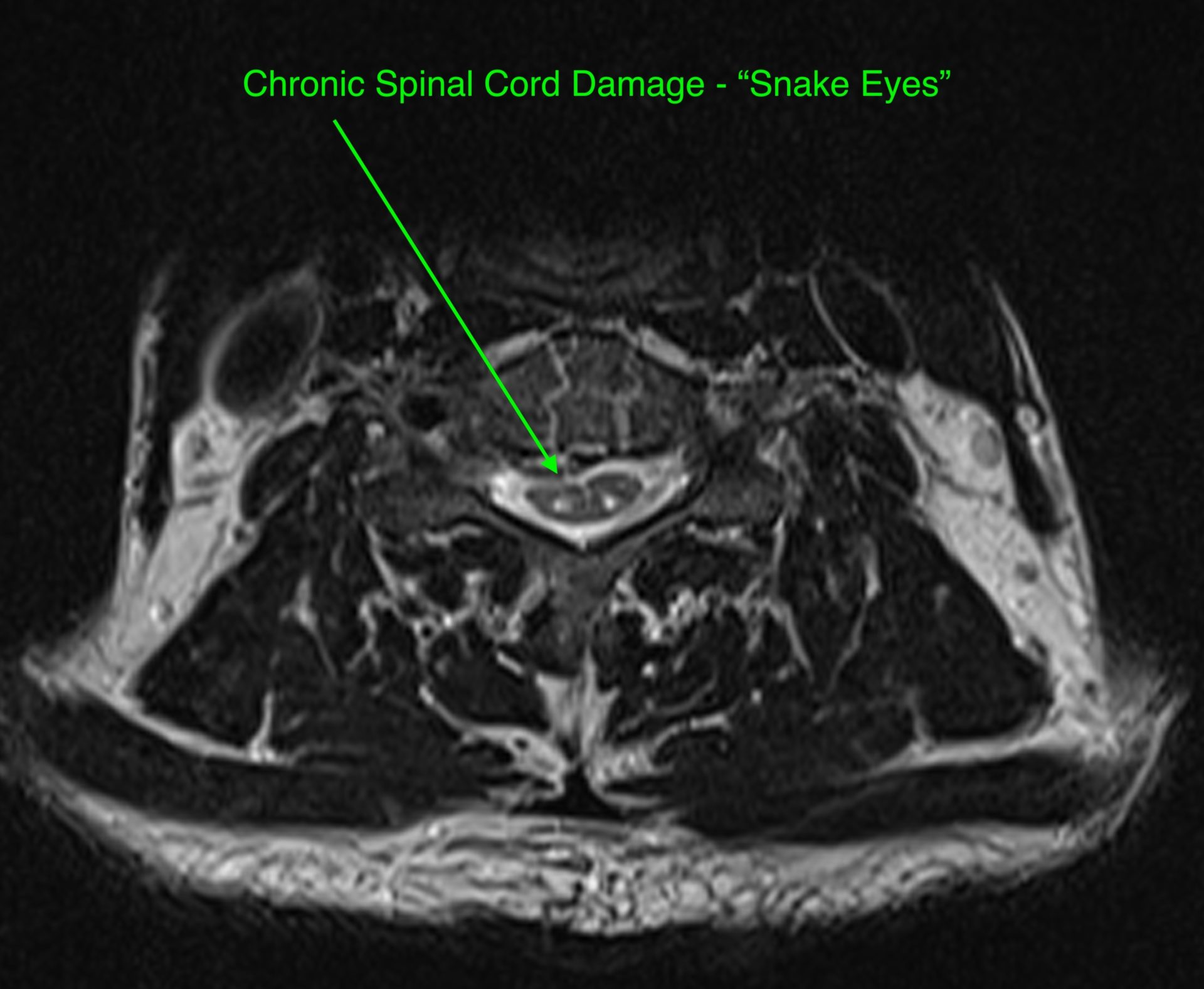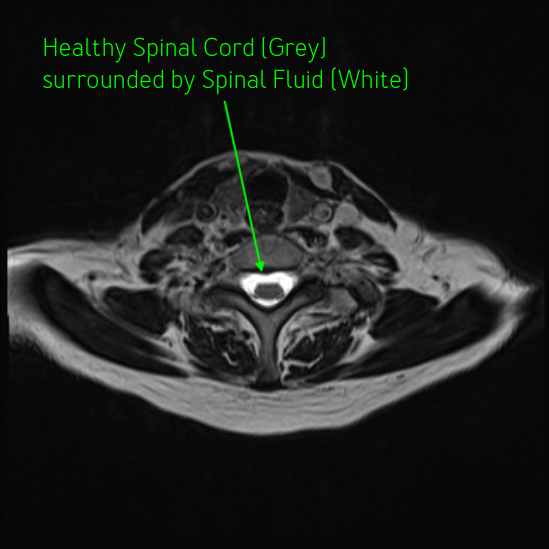Cervical Myelopathy
Cervical myelopathy is a condition where the spinal cord in your neck (cervical spine) gets compressed or squeezed and develops permanent damage. This compression can lead to a variety of symptoms because the spinal cord is responsible for sending signals between your brain and the rest of your body. Here’s a simple explanation:
What Happens in Cervical Myelopathy?
Spinal Cord Compression: The spinal cord runs through the cervical spine and carries important signals from your brain to your body. If something presses on the spinal cord in your neck, like a herniated disc, bone spurs, or a narrowing of the spinal canal, it can cause problems with these signals.
Symptoms: When the spinal cord is compressed, it can cause a range of symptoms, including:
-
- Neck pain: Sometimes, there’s pain in the neck, but not always.
- Numbness or tingling: You might feel these sensations in your arms, hands, or fingers.
- Weakness: It can be hard to grip things or lift your arms.
- Clumsiness: You might notice that you’re dropping things more often or having trouble with fine motor tasks like buttoning a shirt.
- Walking difficulties: Some people experience trouble walking or balancing, which can make them feel unsteady and increase risk of falls.
- Loss of bowel or bladder control: In severe cases, cervical myelopathy can affect your ability to control your bladder or bowels.
| Cervical Myelopathy (Side View) | Cervical Myelopathy (Cross Section) | Healthy Spinal Cord (Cross Section) |
Why Does This Happen?
Cervical myelopathy is often caused by age-related changes in the spine, like:
- Degenerative Disc Disease: Discs between the vertebrae wear down over time.
- Bone Spurs: Extra bone can grow in response to disc degeneration and can press on the spinal cord.
- Thickening of Ligaments: The ligaments that help support the spine can thicken and compress the spinal cord.
- Ossification of the Posterior Longitudinal Ligament (OPLL): Some patient groups (more commonly Polynesians and Japanese) may develop bony growth in the ligament in the spine adjacent to the spinal cord.

Myelomalacia within the spinal cord (grey) Surrounded by spinal fluid (White)
Myelomalacia
Myelomalacia is a radiological appearance of the spinal cord where it appears brighter (more white). Myelomalacia is a result of breakdown of the spinal cord tissue, typically due to chronic compression, but may also occur due to acute trauma. Myelomalacia represents chronic spinal cord damage.
Snake Eyes
This “snake eyes” sign (Shown in the image left) is usually indicative of chronic spinal cord compression and myelomalacia, which is a indicative of spinal cord damage. It suggests a more severe or longstanding compression of the spinal cord, often associated with worse clinical outcomes.
Why Is It Important?
Cervical myelopathy is a serious condition because it involves the spinal cord. If left untreated, the symptoms can get worse and may become permanent. That’s why it’s important to see a doctor if you’re experiencing symptoms.
The natural history of cervical myelopathy, if left untreated, generally involves a gradual worsening of symptoms over time. Here’s what typically happens:
Progressive Worsening
- Symptom Gradual Onset: In many cases, cervical myelopathy starts with mild symptoms, such as subtle changes in hand coordination, occasional numbness or tingling, or slight balance issues. These symptoms might come and go initially.
- Increasing Severity: Over time, these symptoms typically worsen. The numbness, tingling, and weakness can spread from the hands and arms to the legs. You may find it harder to perform fine motor tasks, like writing or buttoning a shirt, and walking might become more difficult due to balance problems or leg weakness.
Permanent Nerve Damage
- Loss of Function: As the spinal cord continues to be compressed, the nerve damage can become permanent. This means the loss of function, such as the ability to walk or use your hands, may no longer improve even if treatment is eventually given.
- Paralysis: In severe cases, untreated cervical myelopathy can lead to paralysis in the legs or, in extreme cases, the arms and hands as well.
Complications
- Bladder and Bowel Control: Loss of control over bladder and bowel functions can occur as the condition worsens.
- Increased Risk of Falls: Due to balance and coordination problems, there is a higher risk of falls, which can lead to further injury.
Plateau or Rapid Decline
- Variable Progression: The rate at which symptoms progress can vary. Some people may experience a slow, steady decline, while others might have periods of stability followed by sudden worsening.
- Sudden Deterioration: In some cases, a relatively stable condition can rapidly deteriorate, especially if an additional injury or trauma occurs.
Quality of Life
- Decreased Independence: As symptoms worsen, everyday activities become increasingly difficult, leading to a loss of independence and a reduced quality of life.
- Chronic Pain: Chronic neck pain and discomfort can become more prominent as the condition progresses.
How do you treat Cervical Myelopathy?
Cervical myelopathy is a progressive condition that can lead to significant and permanent neurological impairment if left untreated. Early diagnosis and treatment are crucial to prevent or slow down the progression of the disease and to preserve as much function as possible. Physiotherapy, or surgery to relieve the pressure on the spinal cord may be suggested. The most appropriate treatment options depend on symptom severity, your health status, and whether symptoms are progressive or stable.
These individual treatment options should be discussed with A/Prof Buckland during your consultation.
To learn more about surgical treatment of Cervical Mylopathy and A/Prof Buckland’s outcomes for those surgerys, see below.




